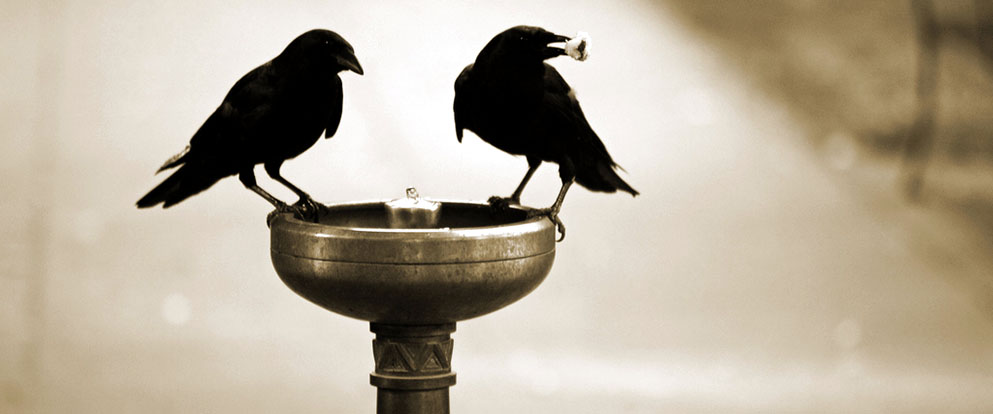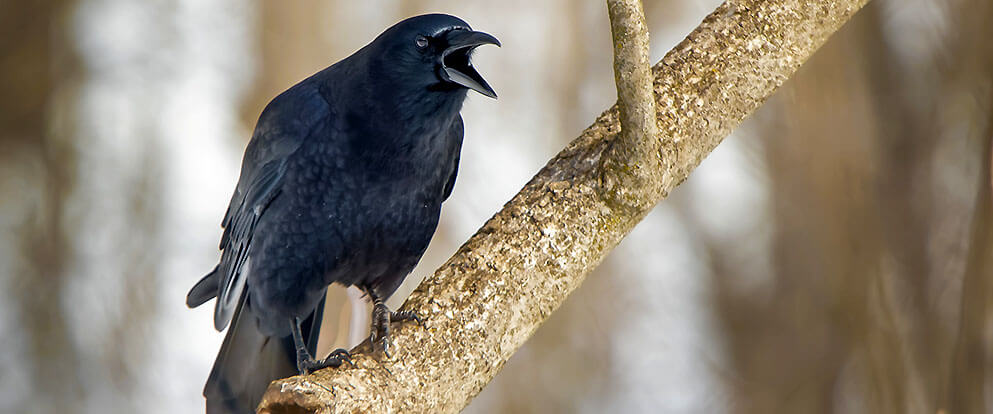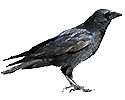Often unappreciated by bird watchers (primarily because they will eat the young of nesting songbirds), there is actually much to learn about these interesting birds we see almost every day in the United States.
Around 18 inches in length and sometimes growing up to 21 inches long, the American crow is one of the larger birds that you can easily feed with sunflower seeds or corn. American crows are usually with a family group, including fledglings from the prior years.
American crows mate for life, and young males may spend 2-4 years with their parents before starting their own families. Parents are glad to have them stick around, as these birds help with the care and feeding of their younger brothers and sisters.
There are three easy ways to identify American crows:
Their color. American crows are a solid black. From the tip of the beak to the tiniest tail feather, adult birds and most fledglings don’t have any color on them. Only the youngest fledglings have a tiny bit of pink skin near the base of the bill, and that quickly goes away.
Their calls. If the color isn't a giveaway, the other way to tell American crows from other crows and ravens is their call. The distinctive "caw caw caw" that you hear is almost certainly from an American crows.
Their flight. Unlike many other birds, American crows rarely soar. Their wings are in constant motion and they are strong birds in flight.
It's not uncommon to see American crows put their flying skills to use when chasing off predators. Large herons, hawks or owls have been run off by a group of highly motivated American crows. Even when the predator leaves their nesting area, American crows will continue to "mob" the predator until it flies far away from their young.
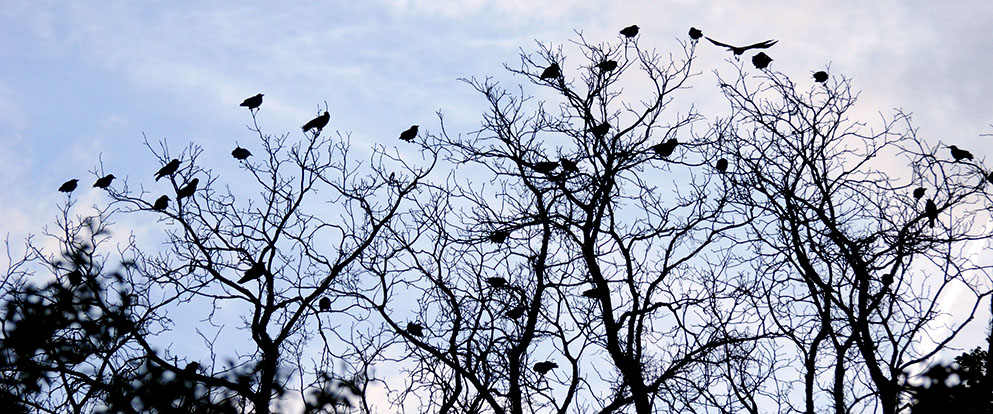
A flock of American crows will sometimes work together to "mob" a predator that threatens their territory.
While American crows can be vocal in most situations, when they are nesting they stay very quiet to avoid attracting predators. They make their nests high in trees (preferably in evergreen trees but they will make do with other trees if that’s their only option).
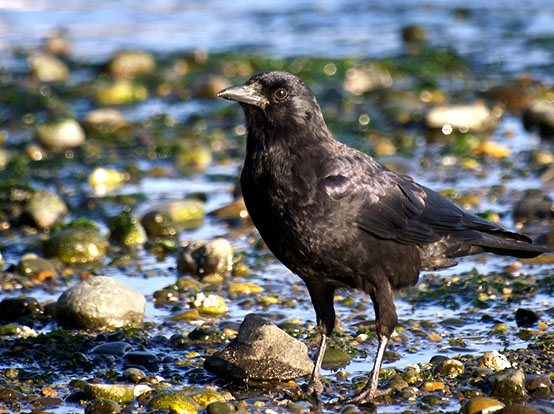
The nests of American crows vary dramatically in size - ranging from six inches across to over a foot and half. American crow nests are made from sticks or twigs and lined with tree needles, bark or grass. You may even find animal hair at the bottom of a nest to line it and keep the nestlings warm.
Both the male and female help build the nest, which the female will stay in while incubating her 3-6 eggs. While she sits on the nest, her mate will bring her food. After the eggs hatch, the adult male and other family members will often help feed and care for the nestlings.
You'll find American crows almost anywhere, but they tend to be near people and in locations that offer easy access to water. We often unwittingly provide convenient food locations, and from sprinklers to birdbaths - the water we use gives American crows reasons to stay close.
What American crows eat
Farms, parks, golf courses, towns and even garbage dumps offer good access to food. American crows are not picky eaters, and will eat a broader range of food than most birds. From corn or insects to mice and fish, you never know what you will see this bird eating.
Bird food: While American crows do not typically eat at bird feeders, they will eat corn, peanuts or sunflower seeds that you leave out in an open area. Scarecrows are still used to keep American crows and other birds out of cornfields, where they would otherwise gather in the hundreds to eat the cornfield dry of its crop.
Other birds and small animals: Unfortunately they may also eat baby birds that are nesting near your yard. American crows are very smart and will follow unknowing adult birds back to a nest and then carry off their eggs or nestlings.
Carrion and garbage: Animals don't necessarily have to be alive for American crows to eat them. These birds are comfortable scavenging at dump sites and can often be seen eating road kill alongside a busy street.
American crows are smart and adaptable. While not everyone is happy to see them, it's difficult not to appreciate all of the unique characteristics of this large bird that’s found across the United States.
